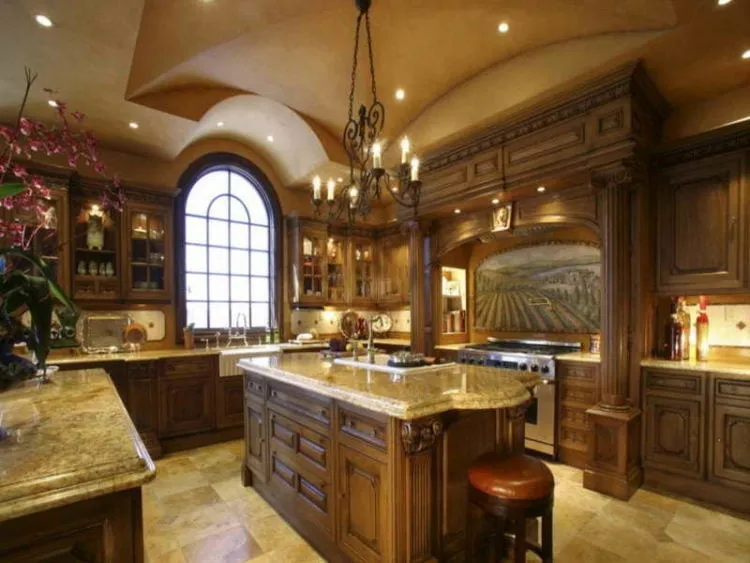Embracing Tuscan Vineyard Kitchen Decor
Tuscan vineyard kitchen decor evokes a sense of warmth, comfort, and rustic elegance, bringing the charm of the Italian countryside into your home. This design style is characterized by its use of natural materials, earthy color palettes, and a welcoming atmosphere, reminiscent of sun-drenched vineyards and traditional Italian farmhouses. Creating this aesthetic involves carefully selecting elements that reflect the essence of Tuscany, from the textures of the walls to the accessories that adorn the space. The goal is to craft a kitchen that feels both inviting and functional, a place where family and friends can gather and enjoy the simple pleasures of life. Incorporating these design principles allows you to create a kitchen that is not only beautiful but also reflects the heart of the home, a space that embodies the spirit of Tuscany itself.
Rustic Elements in Tuscan Kitchens
The foundation of Tuscan kitchen decor lies in its rustic elements. Think exposed beams, distressed wood, and stone surfaces that create a sense of history and authenticity. Incorporating these features not only adds visual interest but also contributes to the warm and inviting atmosphere. Consider using reclaimed wood for your cabinetry or island, adding a touch of aged charm. Stone backsplashes or countertops further enhance the rustic appeal, while also being durable and practical. The key is to embrace imperfections, as these details add character and tell a story. The goal is to create a space that feels lived-in and loved, a true reflection of the Tuscan lifestyle. By integrating these rustic elements, you transform your kitchen into a space filled with warmth and timeless beauty.
Incorporating Natural Materials
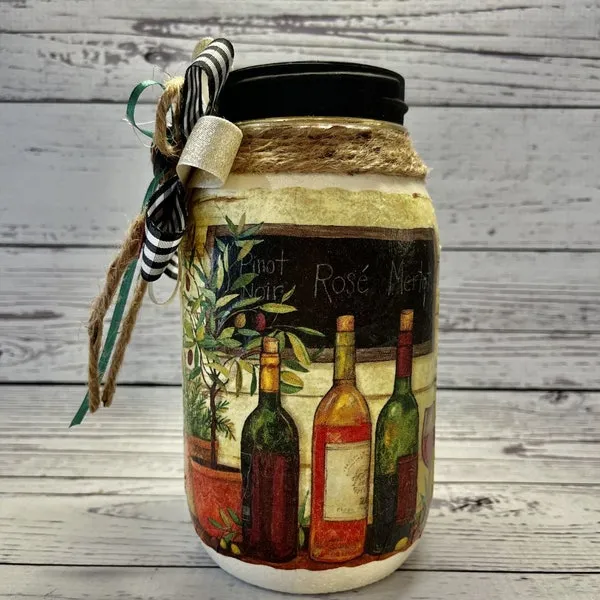
Natural materials are paramount in Tuscan kitchen design, bringing the outdoors in and reinforcing the connection to the earth. Wood, stone, and terracotta tiles are essential components. Opt for wooden cabinets and furniture, choosing finishes that highlight the natural grain of the wood. Stone countertops or backsplashes introduce texture and durability, while terracotta tiles on the floor or as accents add warmth and a rustic feel. Woven materials like rattan or wicker can be incorporated for chairs or baskets, adding softness and a touch of natural elegance. The use of these materials not only enhances the aesthetic appeal but also promotes sustainability and a sense of well-being, creating a kitchen space that is both beautiful and harmonious.
Color Palette Selection in Tuscan Design
The color palette of a Tuscan kitchen should be inspired by the natural landscape, with warm, earthy tones dominating the space. Think of sun-drenched fields, rolling hills, and the rich colors of the earth. The walls can be painted in warm shades of beige, cream, or soft yellow, creating a backdrop that is both inviting and uplifting. Accents of terracotta, olive green, and deep reds can be introduced through accessories, textiles, and decorative items. These colors work together to create a sense of harmony and balance, while also adding depth and visual interest. The goal is to create a space that feels both grounded and serene, reflecting the natural beauty of the Tuscan countryside. By carefully selecting your colors, you can craft a kitchen that is both aesthetically pleasing and evokes the spirit of Tuscany.
Earthy Tones for Kitchen Walls
Earthy tones form the core of the Tuscan kitchen’s color scheme, creating a sense of warmth and grounding. Consider using warm neutrals like creamy whites, soft beiges, and gentle tans for the walls. These colors serve as a perfect canvas for the other elements in your kitchen, allowing the natural textures and colors of the wood, stone, and accessories to shine. Avoid bright, bold colors that might detract from the overall rustic aesthetic. Instead, opt for muted tones that reflect the colors of the Tuscan landscape. These subtle hues create a sense of tranquility and enhance the inviting atmosphere of the kitchen. By embracing these earthy tones, you create a space that feels both cozy and stylish, a true embodiment of Tuscan charm.
Warm Wood Tones for Cabinets and Furniture
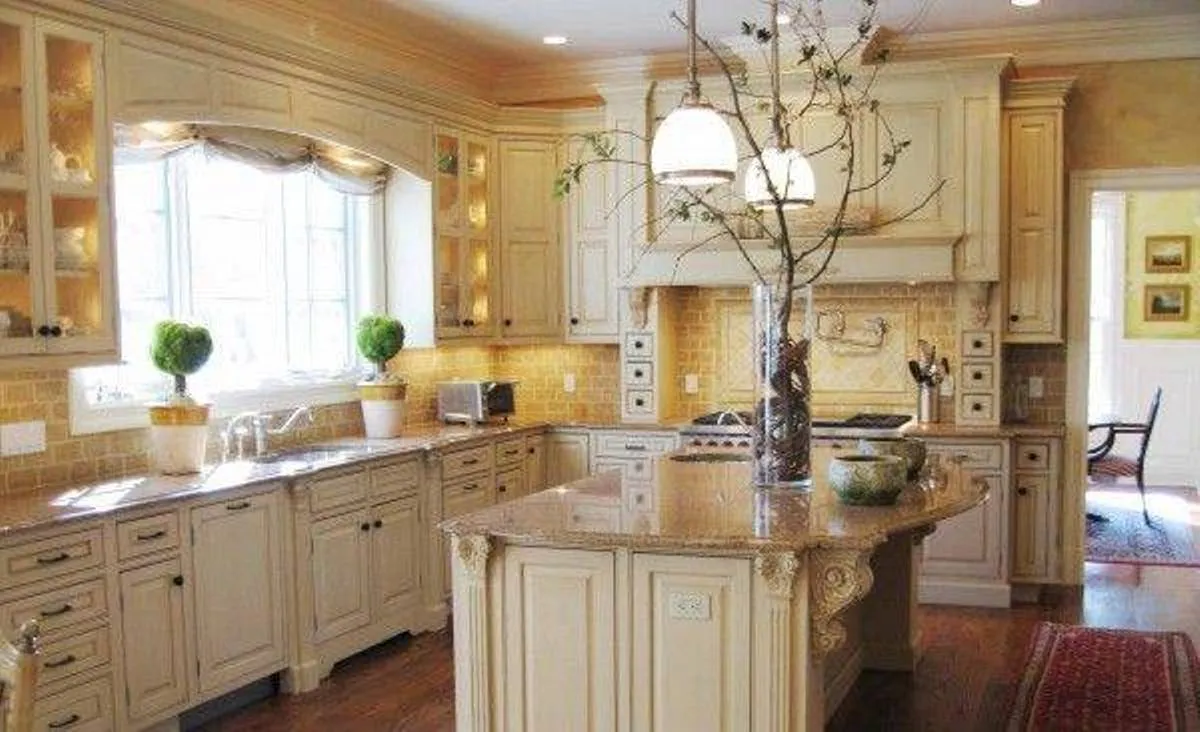
Warm wood tones are essential for creating an authentic Tuscan kitchen. The choice of wood should reflect the natural beauty of the material, with finishes that enhance the grain and texture. Opt for cabinetry and furniture made from solid wood, such as oak, cherry, or walnut. Consider distressed or antiqued finishes to add character and a sense of history. The warm tones of the wood provide a welcoming contrast to the lighter walls, creating a balanced and harmonious space. Using these warm wood tones throughout the kitchen adds depth and richness. These natural wood tones create a comforting environment, reflecting the traditional Tuscan approach to design.
Vineyard Inspired Kitchen Decor
To capture the essence of a Tuscan vineyard, incorporate elements that reflect the region’s rich winemaking history. Display wine bottles, corkscrews, and other wine-related accessories. Use decorative items such as grapevines, grape clusters, and wine-themed artwork to create a cohesive theme. Consider adding a wine rack or a small bar area to enhance the vineyard ambiance. The inclusion of these elements not only adds visual interest but also tells a story, creating a unique and inviting space that reflects the heart of Tuscany. By embracing the vineyard theme, you can transform your kitchen into a charming and sophisticated space.
Adding Wrought Iron Accents
Wrought iron accents are an integral part of Tuscan kitchen decor, adding a touch of rustic elegance and visual contrast. Incorporate wrought iron elements through lighting fixtures, pot racks, cabinet hardware, and decorative accents. The dark, textured metal provides a striking contrast to the lighter colors of the walls and cabinetry. Choose designs that reflect the traditional Tuscan style, such as scrollwork, vines, or other natural motifs. The use of wrought iron not only enhances the aesthetic appeal but also adds durability and a sense of timelessness. Adding wrought iron accents is a simple yet effective way to elevate the look of your kitchen, making it feel authentic and charming. These additions contribute to the overall aesthetic and provide a touch of sophistication and elegance to your kitchen.
Choosing the Right Lighting
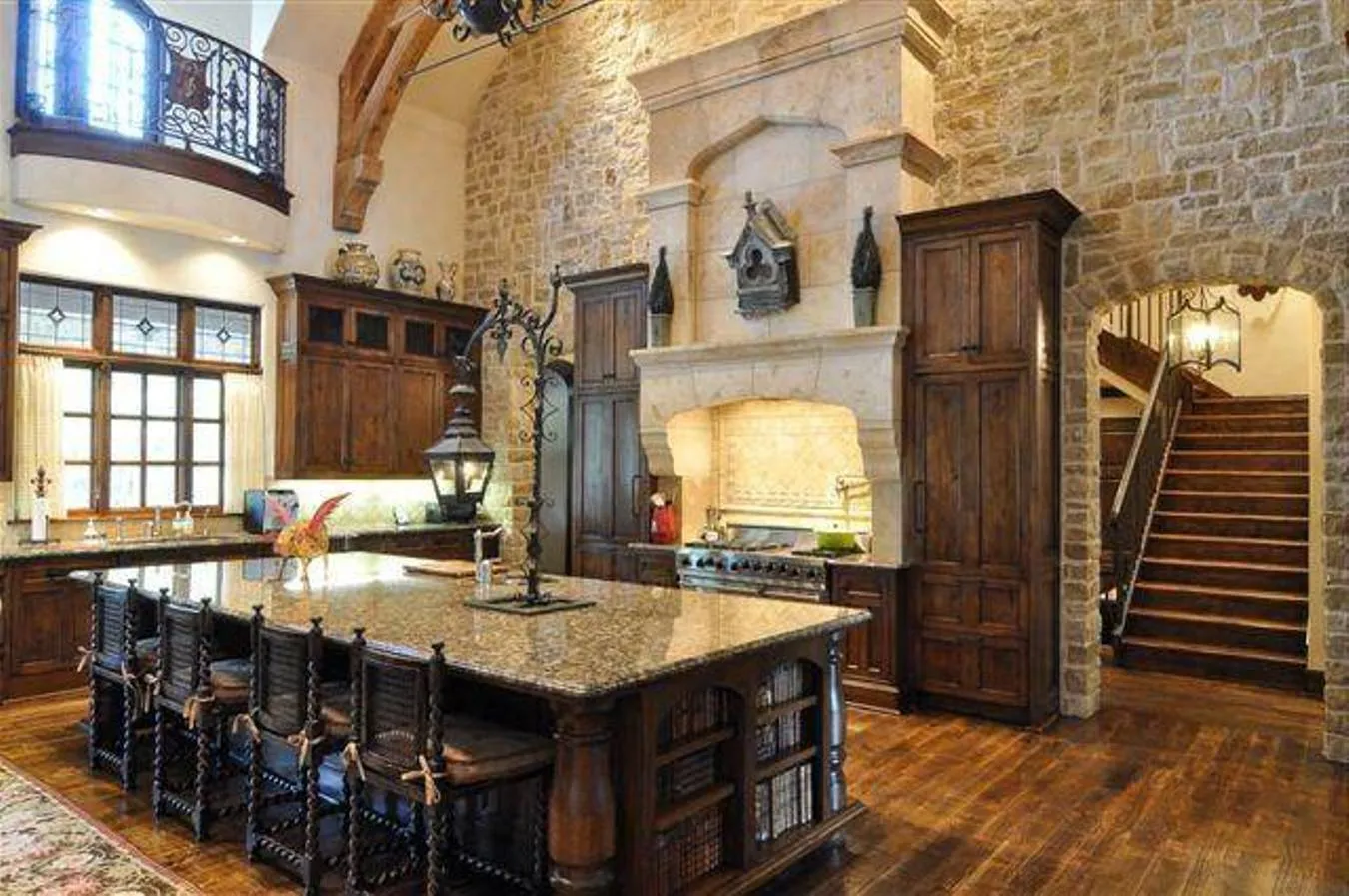
Lighting plays a crucial role in creating the right ambiance in a Tuscan kitchen. Opt for fixtures that complement the rustic style, such as wrought iron chandeliers, pendant lights, or sconces. Choose warm-toned bulbs to create a welcoming and inviting atmosphere. Consider the use of dimmer switches to adjust the lighting based on the time of day or the occasion. Layering different types of lighting, such as overhead, task, and accent lighting, will create a more dynamic and functional space. The right lighting not only illuminates the kitchen but also enhances the overall aesthetic. By carefully selecting your lighting fixtures, you can transform your kitchen into a warm and inviting space, perfectly suited for cooking, dining, and entertaining.
Accessorizing Your Tuscan Kitchen
Accessorizing your Tuscan kitchen is the final step in creating a cohesive and inviting space. Decorate with items that reflect the Tuscan style, such as pottery, ceramics, and textiles. Display olive oil bottles, herbs, and other kitchen essentials on open shelves or countertops. Incorporate textiles like checkered tablecloths, linen curtains, or patterned dish towels to add warmth and texture. Choose accessories that complement the color palette and the overall aesthetic. By carefully selecting your accessories, you can personalize your kitchen and create a space that reflects your unique style. The right accessories tie the whole design together, transforming your kitchen into a true Tuscan paradise.
Decorating with Pottery and Ceramics
Pottery and ceramics are quintessential elements of Tuscan kitchen decor, adding a touch of rustic charm and visual interest. Display handcrafted pottery pieces, such as bowls, vases, and platters, on open shelves or countertops. Choose items with earthy tones, intricate patterns, or traditional designs. Incorporate ceramic tiles as backsplashes or accents to add texture and character to your kitchen. Pottery and ceramics are not only decorative but also functional, providing practical storage and serving options. Decorating with these items adds a unique touch to the space and reflects the artistry of the Tuscan region. The presence of these items helps to bring a sense of warmth, authenticity, and history to your kitchen.
Incorporating Textiles
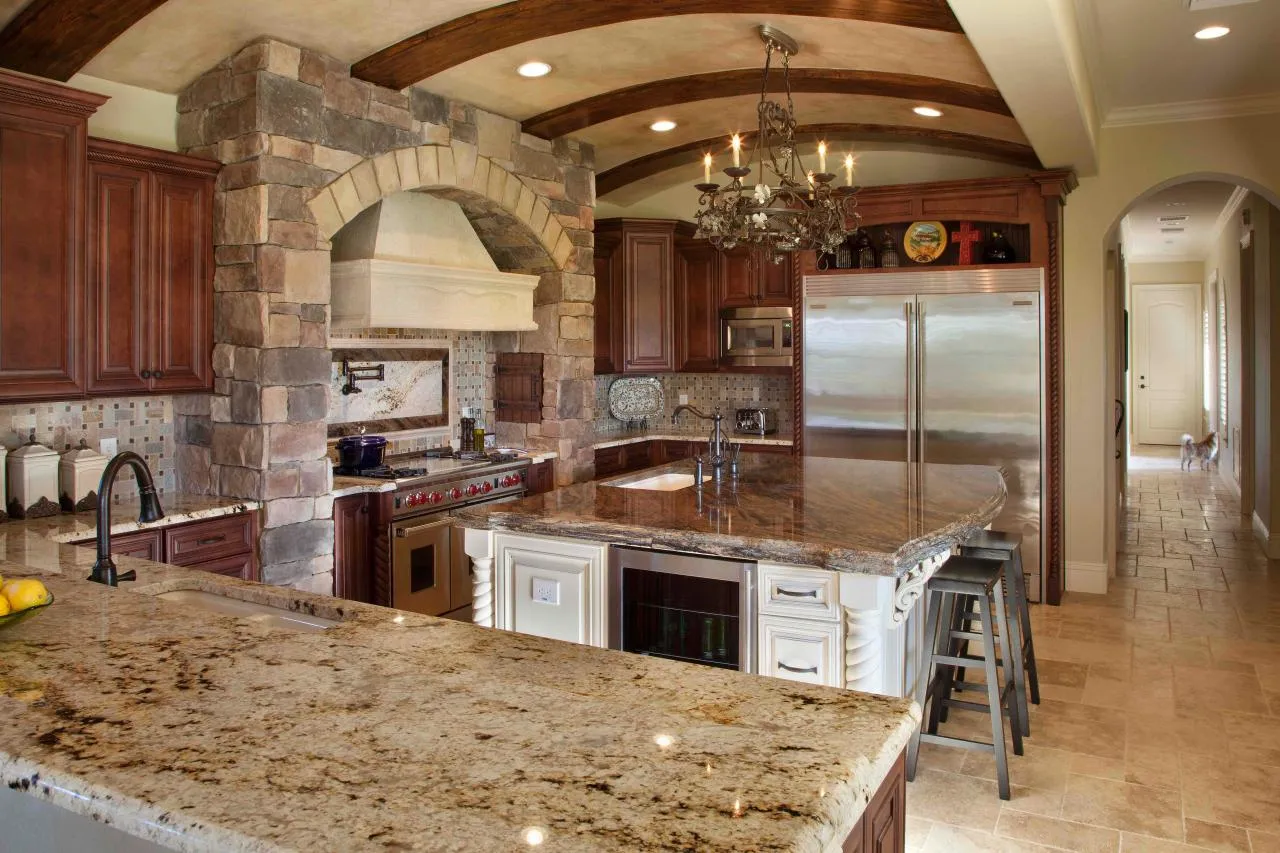
Textiles are essential for adding warmth, texture, and character to a Tuscan kitchen. Choose fabrics that complement the overall aesthetic, such as linen, cotton, and burlap. Use checkered tablecloths, patterned dish towels, and linen curtains to add visual interest. Consider incorporating a rug with a rustic design or a patterned runner for the kitchen floor. The use of textiles not only enhances the aesthetic appeal but also creates a welcoming and comfortable space. By incorporating textiles in your kitchen, you can soften the space and make it feel more inviting. Carefully chosen textiles can bring a sense of coziness and sophistication to your kitchen.
Creating a Cohesive Design
Creating a cohesive design is the key to achieving the desired Tuscan kitchen aesthetic. Ensure that all the elements – from the color palette to the materials to the accessories – work together to create a unified and harmonious space. Pay attention to the details, such as the hardware on your cabinets, the lighting fixtures, and the textiles you choose. Strive for a balance between rustic charm and elegant sophistication. The goal is to create a kitchen that feels both welcoming and functional, reflecting the spirit of Tuscany. By carefully considering all the elements, you can transform your kitchen into a space that is not only beautiful but also a true reflection of your style.
